Exploring The World Of BattleTech Part Three: Technology & Mechanics
September 5, 2016 by crew
Welcome back to the Inner Sphere, Beasts of War. Oriskany here, inviting you to strap into your ‘mechs and fire up the reactors … it’s time ready to stomp, shoot, and jump-jet our way still deeper into the immense Sci-Fi wargaming universe that is BattleTech.
If you’re just joining us, please take a moment to check out Part One and Part Two of our series, where we take an introductory look at BattleTech and then explore some of backstory and setting of this amazing franchise.
For now, however, let’s discuss some of the mechanics of these games, including the tabletop wargame, RPG, CCG, and “quick-fire” expansion sets. We’ll also be opening the access ports on some of the technology of this universe, and how it drives mechanics of Sci-Fi gameplay.
BattleTech: Classic
As mentioned in previous articles, BattleTech was originally created as a hex-based wargame. Since then, rules sets have been developed to handle BattleTech without hexes as a bull-blown miniatures game. But for now let’s start with the basics.
‘Mechs have at least two movement rates, one for walking and one for running. Many ‘mechs also have a “jump” movement rate, used for when massive jump-jets fire to launch the war machine skyward. Additional movement points are required for turning, difficult terrain, and moving up elevated terrain.
Once all ‘mechs have moved, a fire phase begins. ‘Mechs can pivot at the waist to engage targets in expanded arcs, and difficulties to hit are based on the pilot’s gunnery skill, range, how fast your ‘mech moved, and how fast the target ‘mech was moving. Elevation, terrain, and buildings can naturally block line of sight.
One notable feature in BattleTech is heat. Powered by fusion reactors, “waste heat” can build up within a ‘mech’s systems until penalties to hit and movement start to accrue. Overall system shutdown is soon a possibility, as well as catastrophic ammo explosions. Managing excess heat is a classic dilemma faced by mechwarriors.
To combat this problem, ‘mechs are designed with “heat sinks” that dissipate a certain amount of heat per turn. Heat sinks can be hit, however, along with the engine’s heat-protective casing. Players can also chose to slow their movement or not fire certain weapons, giving their ‘mech a chance to cool down before again going flat-out.
Another trick players can pull is moving into bodies of water like lakes or streams. Firing waist-deep in water may help your ‘mech stay cool, which can increase rates of fire. Interestingly, this can make “low ground” almost as tactically important in BattleTech as traditional “high ground” is in many other wargaming systems.
The weaponry in BattleTech is predictably awesome. ‘Mechs can be mounted with all kinds of lasers, PPCs (particle projector cannons), autocannons, gauss rifles (basically, rail guns), short and long range missiles, flamers, point-defence systems, and good old-fashioned machine guns for anti-infantry work.
Special sensors and comm arrays can be mounted so a ‘mech can “spot” targets for heavier weapons like artillery or massive missile-armed ‘mechs, sometimes support weapons that can be off-board or even in orbit. And of course, tanks and APCs can carry all these weapons and arrays as well.
Once a weapon hits, a quick die roll is made to see where on the target ‘mech the shot landed. Damage is assessed very simply, simply find that section on the target ‘mech’s record sheet and fill in that many armour dots. Once the dots in that section are gone, damage penetrates to internal frame and systems, where critical hits can occur.
While ‘mechs are the alpha predators on these battlefields of the future, they aren’t the only ones. Heavier tanks can provide a startlingly powerful punch, especially for their lower point costs. APCs can also carry infantry, armed with rockets, lasers, target designators, or power armour that makes them almost small ‘mechs in their own right.
A complete “Aerotech” wargame is provided for aerospace craft that can operate either as ground attack assets or fighters against enemy craft. In crossover games, a separate board is usually set up for the aeromechs, representing a much wider area for them to fight in, with a small section representing the airspace over the ground battle board.
VTOL craft and high-tech helicopters add still more options, often used at battle sites where massive dropships have established a bridgehead on the surface of a contested planet. Some dropships weigh up to 100,000 tons, carry a regiment of ‘mechs and support craft, and pack enough firepower to engage full-scale warships in space.
The Myth of Complexity
One issue that has persistently dogged BattleTech throughout its history is its reputation as an “overly-complex” game with too much paperwork. While complexity is certainly a subjective concept, with the “tipping point” in a different place for every player, the myth that BattleTech is a cumbersome system is long overdue to be put to rest.
Some players are put off by the battlemech record sheets, which may APPEAR a little formidable. Don’t be fooled. When an area of your mech is hit, you fill in bubbles or tick off components. All this data is on paper just so you don’t have to carry it in your head. Every number on the sheet is one less time you’re flipping through a rule book.
The only thing even close to “bookkeeping” is tracking your heat. At the end of each turn, you add up the heat generated by your weapons and speed. You subtract the heat dissipated by your sinks (which can be damaged), and see if there’s a result for your net heat level. It’s all on the sheet so you’re not consulting charts, books, or cards.
Admittedly, as BattleTech grew in popularity, new books and rules were continually added to feed the fan base’s appetite. Plug in too many of these OPTIONAL rules (as many players undoubtedly do) and yes, BattleTech becomes ridiculously complex with freakish speed. Just remember the vast majority of these rules are optional.
Other factors that can make BattleTech seem overly complex are the options for custom load-outs, tweaked designs, or building your own ‘mechs from the ground up. Okay, HERE (see above) is a fair amount of paperwork … but again, only for those players who choose to incorporate these strictly optional elements into their BattleTech.
Going Hexless
Although initially designed for play on hexes, BattleTech can also be played on a conventional miniatures table. One hex = 2 inches of movement, and the hex-shaped mini base serves as a “template” for arcs of fire. In fact, using scaled terrain dispenses with many of the rules in the hex version, such as determining LOS over or past obstacles.
As with any minis game, players will have to come to an understanding about certain terrain features. Are those heavy or light woods, because in BattleTech there’s a difference. What “level” are those hills, because while LOS is simple to determine with scaled terrain, different levels of elevation affect movement at different rates.
Mechwarrior RPG
One of the truly innovative features of BattleTech was a full wargame-RPG integration, probably the first major franchise to do this in a Sci-Fi setting. Players can make up pen-and-paper RPG characters and run them through a campaign, plugging their scores into actual BattleTech wargames when the larger engagements get started.
There have been four basic variations of the Mechwarrior RPG series, with the last one renamed “A Time of War” to distinguish it from the Mechwarrior computer games. A complete re-write from previous editions, AToW uses a “life path” system of character generation, giving the players the control within a budget of experience.
The core rulebook is massive, with over 400 pages of content, but has been pinged in several reviews for being too complex in its attempt to be fully compatible with the tactical BattleTech wargame at all points. I doubt this is completely necessary, and I’m sure players can agree on where rules can be bypassed for smooth RPG-style play.
Battletech CCG
The BattleTech Collectible Card Game (CCG) was produced by Wizards of the Coast from 1996-2001. In broad terms, the game has strong similarities to other popular card games of the era, like Magic the Gathering (players can build decks of sixty cards, the object is to make your opponents run out of cards, etc.).
The with fifteen years of publishing history behind it, the BattleTech CCG was able to draw from a vast library of tech, characters, and artwork. The game tries to maintain fidelity to the BattleTech universe allowing players to use only cards from a certain House or Clan, at least in the official FASA rules.
Alpha Strike
Alpha Strike, meanwhile, is the “Quick Fire” version of BattleTech, where much of the game’s “rivets and micro-processors” detail is abstracted into a fast, fluid, and simplified system. Game times are cut to about one-third (a lance-on-lance game that takes three hours in Classic BattleTech is done in an hour or even less).
Alpha Strike really boils things down. Gone are the ‘mech record sheets, trimmed down to just a poker-sized reference card. ‘Mechs have no individual weapons, only an aggregate firepower value for short, medium, and long range. Heat management is abstracted to a simple “1, 2, 3, Shutdown” scale.
This isn’t to say that Alpha Strike is overly simplistic. Rather, it allows players to pile a large number of ‘mechs on the table, and run epic battles that might be unmanageable in classic BattleTech. In larger battles, the scales and geometries of larger formations come into play, along with a heavier emphasis on movement and combined arms.
Still, the lower level of detail means that Alpha Strike lacks some of the life-and-death decisions players must make in classic BattleTech. Should you fire BOTH your PPCs and take out that enemy mech, even at the risk of shutdown or ammo explosion through overheating? Can you get to that objective fast enough, and still make your piloting roll?
I hope you enjoyed this very brief overview of some of the mechanics available in the BattleTech universe. Clearly, this is only the start of the conversation, so please help keep it going with comments, questions, or suggestions in the comments below . . . and check back next week as we complete our series on this amazing franchise.
If you would like to write articles for Beasts Of War then get in contact with us at [email protected] for more information!
"Some players are put off by the battlemech record sheets, which may APPEAR a little formidable. Don’t be fooled..."
Supported by (Turn Off)
Supported by (Turn Off)
"This isn’t to say that Alpha Strike is overly simplistic. Rather, it allows players to pile a large number of ‘mechs on the table, and run epic battles that might be unmanageable in classic BattleTech..."
Supported by (Turn Off)





























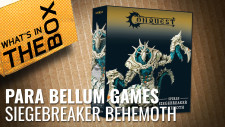

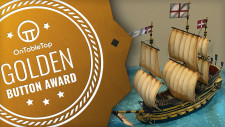
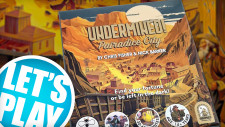








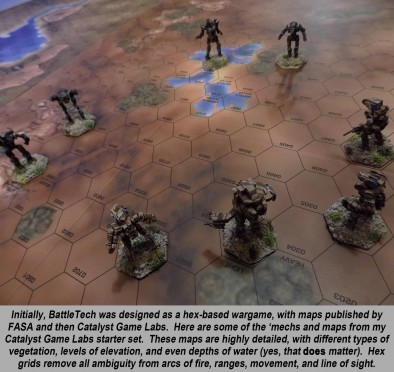
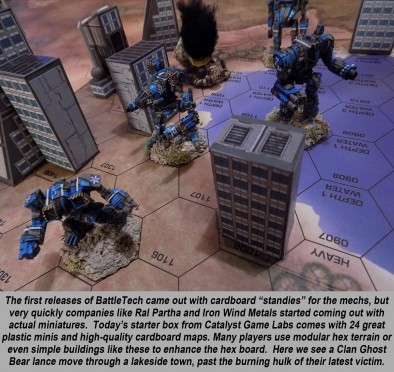
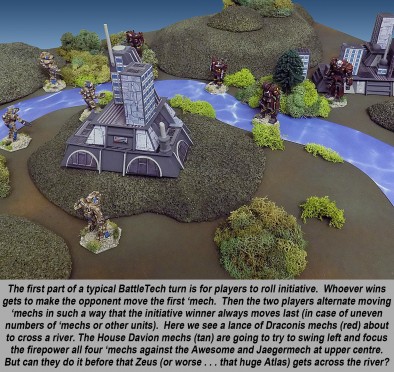
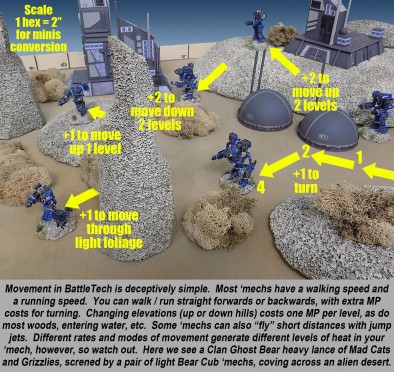
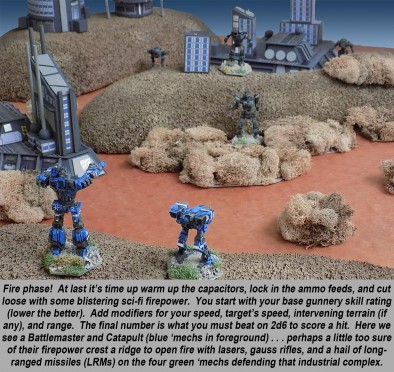

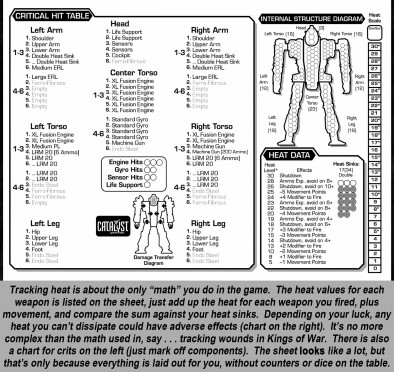
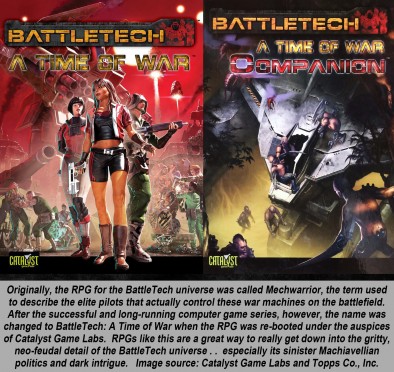
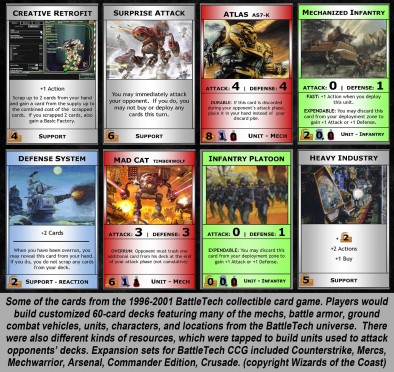
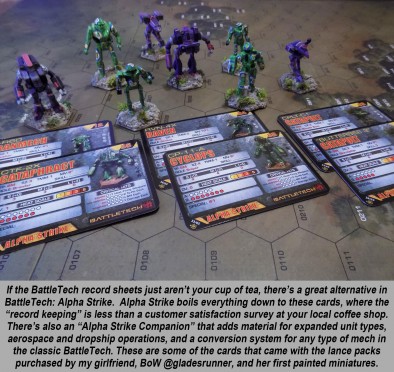

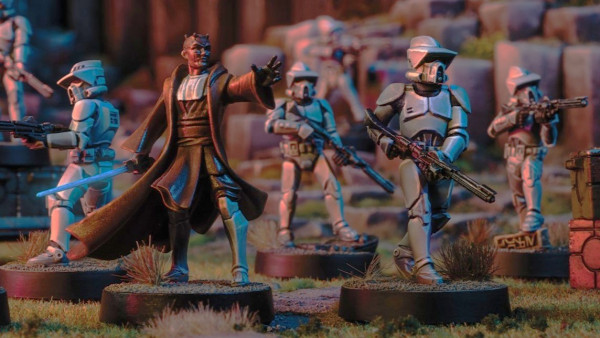
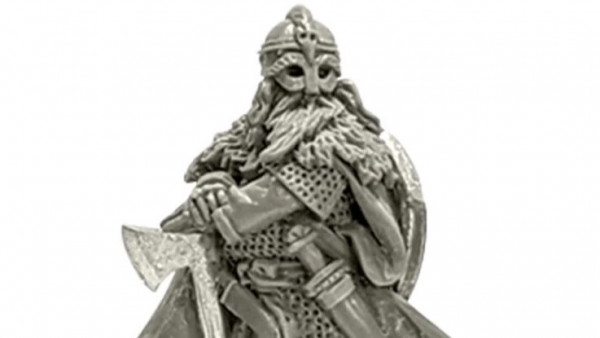
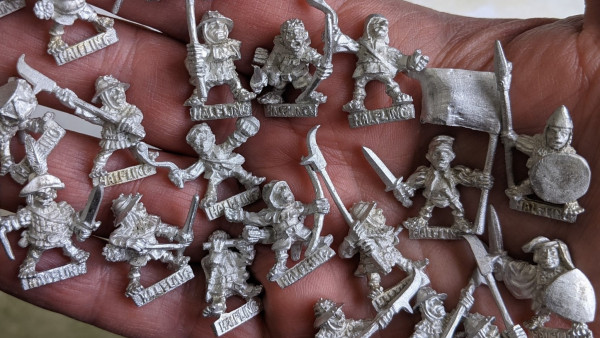

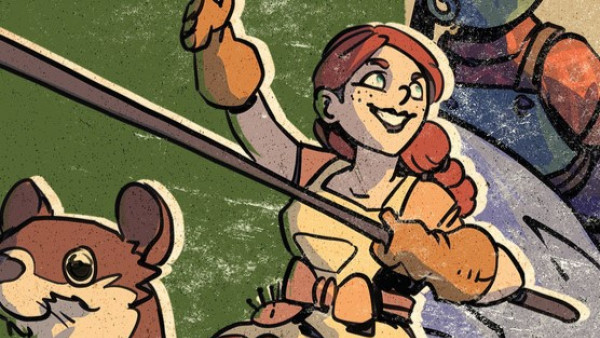
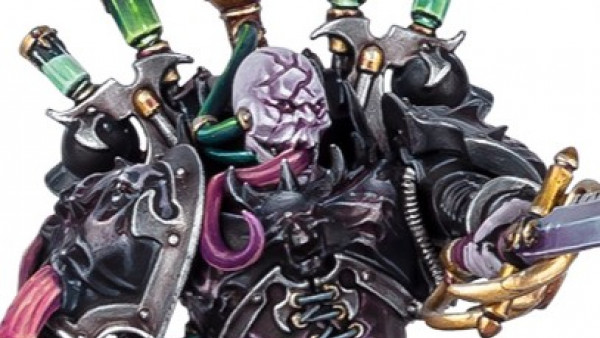
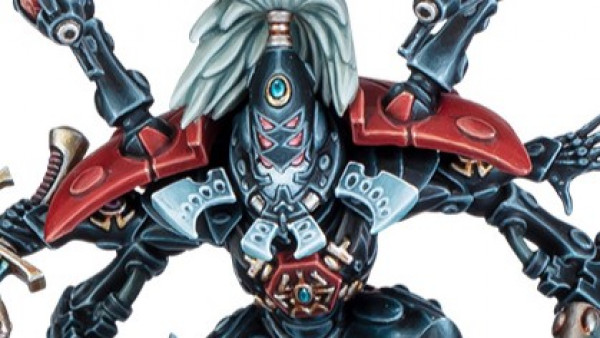
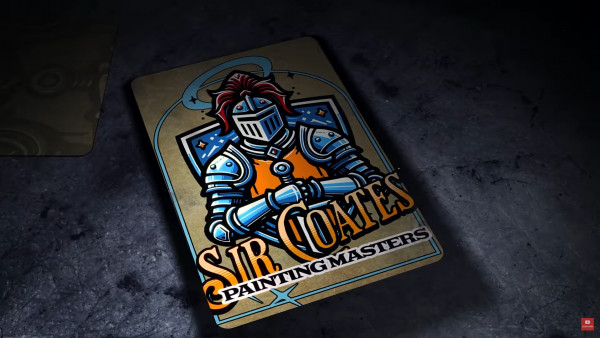
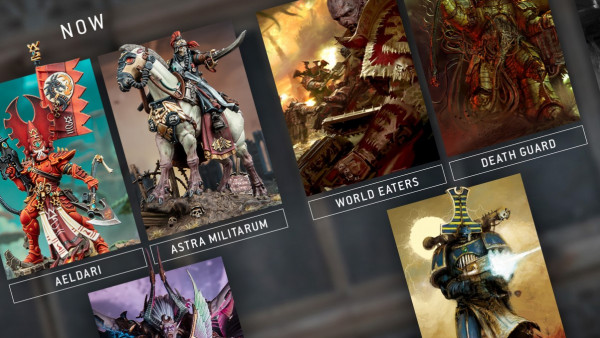
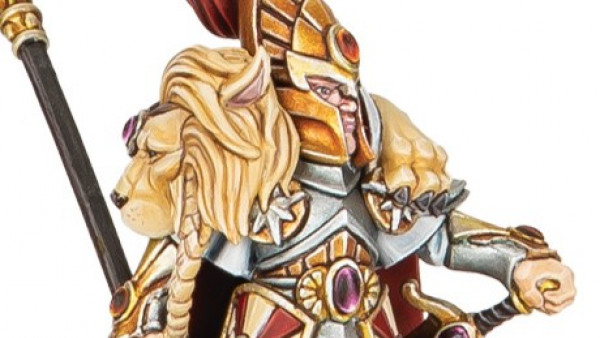

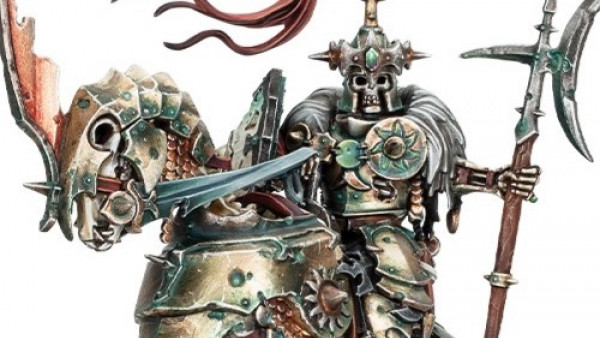
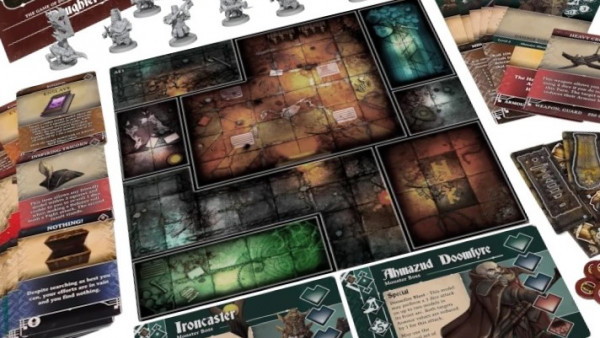


















Nice piece yet again. The only pieces of the BattleTech puzzle that have nevee drawn me in are the RPG and AeroTech/Battlespace. I sat down recently to read the AeroTech section of the Total Warfare rulebook and just glazed over, but I am persisting with it until I can put a game on the table. The RPG however just doesn’t work for me. I’ve never been an RPG fan, although I have tried many – I even represented my school in the Scottish D&D championships many years ago – and as much as I love the lore of BattleTech, I’ve… Read more »
I hope you enjoy Horizon Wars! You can find official supplements for the game – finished and beta-testing – via my site at http://precinctomega.co.uk/downloads
The only thing I find odd about the ‘basic’ level of Classic Battletech (and by that I mean the level of rules introduced in the boxed set) is that there is no way of targeting a specific location on an enemy mech to capitalise on those single shot, high damage, high heat weapons like PPCs and Blasers (if you are crazy enough to use them). Instead you are relying on luck to hit a limb or the head where the difference between 8 damage from a Large Laser or 10 damage from a PPC could mean the destruction of the… Read more »
Thanks, @ckbrenneke – I, too, have yet to actually try the AeroTech rules, but have watched several games at clubs and conventions, as well as the great games presented as part of Anthony Wilson’s “Ouchies” battlereports on YouTube. I have, however, waded hip-deep into the Interceptor / Centurion crossovers in FASA’s sibling franchise to BattleTech . . . Renegade Legions. So I doubt the AeroTech would hold many surprises for me. Certainly I agree that the game’s original mechanic was to play on a hex grid, and as people who know me on this site will attest, I “loves me… Read more »
Hex or hexless is totally personal preference. I just prefer the hex version as it’s – for me – the way it was meant to be played. I’m just like that with all my games. I have a bit of a reputation at my local club for telling everyone they’re playing games wrong, as they usually are.
BattleTech is 1/300 scale, and the infantry and vehicles ranges are 6mm, but that just goes to ahow how bad the miniature scaling is across the range.
Not too sure about the 1/300, which is smaller than 6mm. 40-foot mechs are about 2 inches high, which works out almost exactly at 1/200, or 8mm. Although the planes I’ve seen in demo videos are waaaaay too small, perhaps 1/300 or even smaller. And I don’t even bother with the infantry.
Or do you mean the hexes are 1/300? 🙂
It’s 1/285th to be fair, but that is the scale the game was designed at. It’s meant to be a 6mm scale game. Ground scale in the game is 1 hex equals 30 metres. When playing tabletop, 1″ equals 15 metres. The Mechs are not to scale with the hex maps.
There’s a note on this Iron Wind page that refers to the normal BattleTech minis being 1/285.
http://ironwindmetals.com/store/product_info.php?products_id=6832
This is why I have long lamented the terrible miniatures scaling in the game, it’s all over the place.
Cool deal, @ckbrenneke . Yes, the tournament rules we’ve found give the conversion at 1 hex = 2 inches of miniature space (also an option for miniature scale coversion on SSW pdf record sheets). Agreed, the hexes are absolutely not supposed to be in scale with the miniatures (original game didn’t even come with miniatures back in the day). As far as the 1/285 goes, a mech that is described as 10 meters tall = 33 feet would only be be 1.35 inches tall at this scale. In fact these mechs that I buy (from either IWM or CGL) are… Read more »
I know you weren’t being argumentative, and I totally understand where you are coming from. I myself use 10mm infantry figures with BattleTech, I picked up a pack of Pendraken’s colonial marine-inspired line a while back on a whim, and they sat unused for ages. When I got Horizon Wars earlier this year, I based them up to use for that, and realised they would be of use for BattleTech, or moreso Alpha Strike. You’re right, it doesn’t make a huge deal when you play on the hexboards, but it is hugely irritating playing Alpha Strike and having two Mad… Read more »
@ckbrenneke – I’m actually really glad to read that you’re using 10mm infantry . . . 😀 because I bought a UCM / DZC starter army from Hawk Wargames (1/144 – 10mm) and am planning to use them as “generic ground vehicle and infantry guys” to flesh out some of my BattleTech hexless games. 10mm I know is off, but I’m just not painting 6mm infantry, and damn it, for gaming its close enough. 😀 I guess so far I’ve been lucky, when I bought IWM Mad Cats they scaled up perfectly next to the Mad Cat I had from… Read more »
@Oriskany, there are two lines of Aerospace models – one is all Fighters, scaled to be similar in size to a ‘mech mini, primarily to represnt fighters in games of BattleTech or if you’re playing a small-ish AeroTech game. The other line covers fighters, DropShips, JumpShips, WarShips and so on. There’s no consistent scale between different types of ship (so WarShips will be scaled roughly correctly between each other, and DropShips will be scaled as well, but the DropShip models aren’t scaled comparitively to the WarShips). The Fighters for that line are smaller than pennies.
I’ve managed to get to the point where I don’t see BT miniatures as scale miniatures à la 40k, or whatever. These days I just view them as complex, painted game board pieces, more akin to chess pieces. Being as there is no scale consistently between the minis, the hex-maps and the weapon ranges (a machine gun with a maximum range of 90m.?! What is it? A 45ACP Thompson?!), I have come to accept that things are what they are in BT. Since reaching that point of inner peace, I’ve found that I can enjoy the game more than ever… Read more »
Truer words never spoken, @chillreaper . I mean you can put 10mm infantry next to 8mm mechs and 6mm aeromechs and they don’t look right, but once you set everything up on a 6×4 table you realize that the models are far enough apart where it doesn’t really matter. If the scales even make a difference in true LOS (assuming you’re playing hexless) you can always “4+” it to get past the issue. But so far that hasn’t happened on our tables. And like we were saying with @ckbrenneke – on a hex board, it really doesn’t matter at all.… Read more »
And here I thought aimed shots were always +4…… May have been playing toooooo long.
Pretty sure you’ve always been able to make aimed shots, but they are pretty situational. You can only take an aimed shot at an immobile target, that being a shut down or damaged mech. It’s due to the abstractions of the game system, in that you’re assumed to be firing on a constantly moving target, even if it doesn’t move from a hex. It’s this that gives the targeting computer value, as it’s far more advanced than the basic targeting systems of a Mech.
Another great installment in the BattleTech series by the one and only James @oriskany I did only have a chance to play the Classic version of the game and I must admit that the bookkeeping and complexity are myths. The record sheets really help with the game and are mainly used as a helpful reference. Heck in Warmachine/Hordes you also keep the track of damage to by ticking boxes. I also find the heat rules to be really good and functional with keeping everything in balance. Thanks to it you do not have a heavy mech pounding everything it got… Read more »
I really like Battle tech but…. damn they badly need to update the look of it all. The MWO team redesigned a lot of the mechs, and it still feel like battle tech, but in a awesome way instead of the down right very bad over-much uglyness of the architect boring technical drawings with no art skill at all. I bet if one of the big boy of minis would cast some MWO style minis for BT it would be a hit.
look what this DIY dude came up with :
http://www.resinaddict.com/forum/viewtopic.php?f=18&t=1244
Totally agree that Battletech could do with a revision to bring it more in line visually with the style established by Mechwarrior Online. Other than rights (I suspect due to the licencing issues surrounding the Battletech brand the MWO designs may be off limits for the tabletop) the Battletech line encompasses a huge range of models so resculpting the whole line would be a logistical nightmare. Some folks have taken the bit between their teeth though. Warhansa have a spiffy range of mecha using the MWO designs in quite nice resin, whilst Shimmering Sword over on Deviant Art (http://shimmering-sword.deviantart.com/) does… Read more »
@dawfydd – Other than rights (I suspect due to the licencing issues surrounding the Battletech brand the MWO designs may be off limits for the tabletop) . . . I’m just guessing here, but such legal issues, even WITHIN the BattleTech license, may be a distinct possibility. As an example, I offer the rebranding of “A Time of War” RPG. Originally the BattleTech RPGs (1-3rd editions) were called Mechwarrior. Then the Mechwarrior computer games started coming out. Then FASA broke up, and Microsoft wound up with the Mechwarrior PC license and WizKids / CGL wound up with the wargame /… Read more »
@oriskany see, the whole Time of War thing I always assumed was more of a branding thing: in the years since the Mechwarrior RPG was released the Mechwarrior name had become far more associated with the videogame series, not to mention the Dark Age/ Age of Destruction CMG, so Catalyst went with a new name to differentiate it completely from the other parts of the franchise. I wouldn’t be surprised though if there was a legal component as well….
@Dawfydd: @oriskany see, the whole Time of War thing I always assumed was more of a branding thing: in the years since the Mechwarrior RPG was released the Mechwarrior name had become far more associated with the videogame series, not to mention the Dark Age/ Age of Destruction CMG, so Catalyst went with a new name to differentiate it completely from the other parts of the franchise. I wouldn’t be surprised though if there was a legal component as well…. This is more ot less correct. When FanPro decided to reissue MechWarrior 3rd Edition, it was renamed “Classic BattleTech Role-Playing… Read more »
Cool deal @yavasa and @ckbrenneke . I finally got around to looking this up in Total Warfare. You can make an aimed shot a mech that’s shut down or the pilot is KO’d, with most kinds of weapons. You can’t pick the head without taking a +3 penalty. You can call shots on an ACTIVE target IF you have a special targeting computer installed in your mech. Indeed, Yavasa, I find heat is part of what keeps the game a little more balanced. Clan mechs are friggin’ monsters when it comes to firepower, but are almost always overloaded with heat.… Read more »
Yep @oriskany if only the record sheets were as complicated as government forms…. 😐
Great read as always, seem like one of those game that can become all of your hobby
Thanks, @offline , and I agree, I actually break with some of the older BattleTech guys who don’t like the new MWO designs. I actually do like many of the new MWO mech designs, and totally agree that some of the old ones were a little too Robotech-derpy for me. 😀
Thanks, @rasmus ! Indeed, BattleTech is almost “the American 40K” – it really can become your whole hobby if you let it. 😀 Then again, for hard-core fans, that’s perfectly fine.
I’ve been following these articles with interest with so far, not a lot to bring to the conversation. This is a game that I played more on the PC rather than the tabletop (never got on with the minis). I enjoyed the deep background, which you covered in the last article but you touch upon an area in this article that seemed to be a thing with older games – namely the ability to build, from the ground up, your own vehicle/mech/tank etc. Even the first incarnation of 40k allowed you to build and equip your own vehicle. And with… Read more »
I remember playing a few version of mechwarrior though out the years and generally had fun with it. Even Wizkids Clicks version. I still have a few of those models and they are nicely done for the most part. Your articles make me wish my gaming group actually plays Battletech. So many game system though with good rules makes find one game everyone likes is hard.
Ah, yes . . . @redvers . . . Building my own grav tanks in Renegade Legions! That reminds me of a new 3-hour stories with which I will now regale you. The first was way back on . . . >>> 46,000 words of text edited out <<< . . . now those were the good ole’ days! 😀 😀 Hope you enjoyed that as much as I did. Indeed, I’ve been tinkering just a little with some of the mech designs, based on two “meta” requirements . . . removing weapons and systems for which I don’t yet… Read more »
Memories, Memories – I loved this game back in the day, and you’ve had me digging out my technical readouts for my favourite periods (3039-3048).
And reading todays installment has finally done it – I just brought the 25th Anniversary Boxset, and will be going off the Ral Partha Europe website to eye up the mech models – need me a Mauler and a Hatamoto-Chi at some stage.
Thanks, @kbog and @hearne . Looks like we’ve racked up another victory tally on this article series’ “garage and attic” score! 😀 😀 😀 Oh man, and you’ve bought the starter box set! Wise choice, my friend. I really hope you like it when it arrives. Hearne – I realize there’s been a long discussion of this already, but I really don’t see any issues on the balance of forces so far. BV points, BV points, BV points. Just add ’em up and don’t overcomplicate things with a lot of honor-this and zellbrigen-that (9unless you want to use it in… Read more »
Another great article! I wholeheartedly agree that it’s not a complex game at all, especially once you get into the flow of the turns. At Origins, I saw a crew that had “dice boxes”.. those clear tray plastic boxes that have little compartments in them.. that each had 2 small 6-siders. So when you’d hit with a Missile group, you make one roll for how many missile, then shake the box and you got all the locations quick. Kinda neat little invention. So here’s a question, and I don’t mean to open a can of worms, but here’s my dilemma.… Read more »
Use the zellbrigen dueling rules to limit a Clanner’s strength. They may only fight one opponent at a time, not use melee attacks, and ideally take in bigger, tougher targets.
I’ve never actually got round to thoroughly testing it out, but how does the Battle Value system work for balancing forces?
Obviously, you end up with a difference in unit numbers (unless it’s Clan lights vs. IS heavies/assaults), but does it end up with a 2:1 ratio or is it even worse than that?
I think that I could cope with a 2:1 ratio as regards the sitting around eating crisps factor.
Yeah, there’s a lot of factors at play for BV to give a ratio, but 2-1 is about fair. It’s dependant on pilot skill levels as these adjust the base BV of a Mech, but a good example is a 3050-era Atlas AS7-K with a 4/5 pilot costs 2,175 BV points. A Dire Wolf/Daishi Prime with a 4/5 pilot costs 2,712pts, not a huge leap to be fair, but stick a 3/4 pilot in it and it would come in at 3,742pts. A 75ton Orion ON1-M points at 1,414 with a 4/5 pilot. A Mad Cat Prime with a 4/5… Read more »
I’d always figured that you’d want two full lances to go up against a star, so I’m glad to see that my guesstimate wasn’t too far off – the only problem is that the idea of running 8 mechs makes my head hurt!
Agreed, that is what I came up with as well. The trick was always getting the amount of “engagement in the game” to balance. When you’re running 2 or 3 Mechs, it takes some effort to keep the flow of the game going quickly. There’s a sweet spot in there where you’re about 8 or 9 to 5.. and the rotation of turns can keep you going. But that also means juggling 8 ‘Mechs. 🙂 So where is it that I can find how to make BV calculations? I see them for AlphaStrike, but haven’t found the way to calculate… Read more »
Easiest source is CGL’s own Master Unit List. Each Mech is given a base BV with a 4/5 pilot, but each individual Mech entry has a matrix on it for calculating BV depending on gunnery/pilot skill. There’s a calculation for it for custom Mechs, but in that case you’d be better using a bit of PC software like Solaris Skunkwerks, Heavy Metal Pro, or Drawing Board to do all the hard work for you.
http://www.masterunitlist.info
@ckbrenneke brings up a good point re: the variables of different piloting and gunnery skill checks as pertains to the BV system. These can make a HUGE difference. Just fooling around in Solaris Skunk Werks, I dropped the standard skill levels (4 gunnery, 5 piloting) on an AWS-8T Awesome . . . to a 3 gunnery and a piloting. The BV cost jumped from a 1593 to a 2198, over 600 points (approx. 73%). Man, now I want to drop the skill targets on one of my Mad Cat As . . /. see if I can get a mech… Read more »
Hey @oriskany, you can make a 0/0 Mad Cat Prime and it’ll weigh in at 7663!!!!
Er meh geerd! 😀 I totally want to try that now. Put that 7600 BV Mad Cat up against 10 Clints with 4/5, and see what happens.
@Oriskany, for true craziness in BV, a Turkina Z with a 0/0 pilot is 11,018 BV. It carries some insanely powerful gear to do that, though
The heat mechanic is a great way of balancing the weapons of the various bits of hardware. You are basically choosing between high rate of fire and low damage output or low rate of fire and insta-kill shots against lighter mechs. IIRC you could dodge PPC shots in the pc game so you had to be pretty close to your target for them to hit. The use of hex maps definitely didn’t do the game any favours in the look&feel side of things. It looked more at home with the classic counter based wargames of ancient times. How different the… Read more »
BTwas everywhere for awhile with plenty of office so competitions round the country and a really good dedicated magazine they had got while. The problem FASA had was that BT was just another game in its stable of games
Arghh . . . see, this is what happens when I road-trip on the day an article comes out. I fall behind in the thread, then try to catch up, trying to explain things in replies that other guys have already talked about later in the thread (and probably explained better than I did). 😀 Yes, @limburger – heat can really slow down a Clan mech because so many of their individual weapons / components / systems are lighter, so designers can cram more of them into a frame of a given class. The problem is that more systems create… Read more »
The what if game is always interesting to see where people want it to go. For if FASA showed that games focusing on big stompy robots was a good idea maybe Bandai would get off their rear plats and make a Gundam mini game that would blow everything else out of space. (I can dream.)
@spacewolflord – One of our BattleTech friends here is semi-into Gundam Wing, Mobile Suit Gundam 0079, etc. He describes it a lot like a retelling of World War II with aliens filling in for the Axis. Sorry to say it, I have no time for Robotech, but one of these days I should stick my head into Gundam and take a look at it. 😀
@oriskany Gundam has almost nothing to do with aliens. A very long story short, The Federation set up the orbital colonies to get resources for a damaged earth. And to kick out all the undesirables of the world. The Feds always lorded over the ‘Spacenoids’ because they are mostly Earths cast offs. The spacenoids of course hated this and started to work up their own government. Some used this to gain power. And at the end of the One Year War 50% of humanity was dead.
As always sir, a real treat to just soak and enthuse about a game that I played a few times a long time ago in another life far far away. Whats worse is the fact that both Victoria and myself are starting to get hooked, so milk for tea or track down some or scratch build and I have to say I am drawn to the latter big time.
I raise my china cup of rosy lee mate.
WooHooo my first attempt at painting Mechs has made it in an article!
I have to say, even as a new player, I prefer the more traditional way to play than Alpha Strike. Don’t get me wrong, If I ever have the urge to play 10 on 10 mech battles, I’ll definitely reach for Alpha strike as I don’t have a full weekend to give to the game. However, I love the detail and the visceral feel of marking off destroyed systems and wondering how long I can keep my limping, one armed mech on the field 🙂
Using Alpha Strike for 10v 10 game. Sounds like defeatist talk to me
Thanks very much as always, @chrisg – although I certainly wouldn’t want anyone in the UK to go without tea on account of my articles. 🙂 One of the nice things about BattleTech is that financially it can be very inexpensive to play. It demands a lot of TIME, but takes it easy on one’s bank account.
Yay, @gladesrunner ‘s mechs are in the article! You’re officially famous. 😀
Another fascinating article. Thanks for all your hard work James, it’s very much appreciated indeed. I’d really love to see a live battle report at some stage. This whole Battletech thing is totally up my alley and I’ve got to look into what woukd be the best starting point for me here.
(Really struggling to type anything as this stupid chatroom bar obscures my screen..grrr)
Cheers
Andy
When it comes to hit locations there have been many articles over the years about targeting specific locations. To be honest they just complicate what is a very simple game
Aerotech is a fun game but it did feel as if it had been given few smacks with a mallet to make it fit in with BT
The original RPG is OK..When it first came out no-one was expecting a D&D, Traveller like system. It was more there to just generally flesh out your pilots in a campaign game and a way for piots to gradually increase their gunnery and piloting skills
@suetoniuspaullinus – have no fear, sir we have a battle report coming out with Part 04 of this series. Although it won’t really be live, of course. We’ll have to figure out something on that front. And yeah, I totally know what you mean about that chat bar, I have a tough time responding to forum / thread posts when on a small mobile device sometimes. 😀 @torros – from what I’ve seen on AeroTech (Ouchie’s BatReps on YouTube and the like) it is a lot like many other airstrike mechanics (at least as pertains to the ground battle) .… Read more »
@offline
BT is still very popular. To my mind it still works the way it is so why change it?
Completely agree, to the point where I wanted to raise my hand and speak up just a little after the last XLBS segment on nostalgia. This BT groundswell we’re seeing isn’t just nostalgia. BattleTech was popular in the past, it’s popular now, and it’s going to continue to be popular in the future especially once that HBS PC title hits next year. 😀
Agreed – whilst I moved on all my old House Reference books and scenario/source books (why oh why did I do that), I have kept up to date with the core rules and Readouts, plus source books for the periods I’m interested in (except the Battleforce Atlas’s of the 4th War – silly prices on Amazon, but one day.)
And this is after 25 years, and I haven’t played in about the last 20 of them
So, not really nostalgia for me either.
I’m in sort of the same boat, @kbog – I played a little BattleTech waaaaay back in 1991-92, when I was actually part owner of a small, crappy, and short-lived gaming store where it was played religiously by fanatical mechwarriors. 😀 (I was actually really into Renegade Legions at the time). Then it fell off my radar for the longest time, I thought the game was dead until I was very pleased to hear some of the more recent attention Catalyst Game Labs was bringing to it.
Good article. Well done.
IIRC back in 90’s (least during 4th edition) Battletech had 3 levels. Level 1 was basic based on starter box rules with mechs only games and only SW era tech while level 2 added vehicles, infantry, aerospace fighters, ProtoMechs, underwater operations, city combat and higher level tech (including Clan tech). Level 3 had even higher tech but was to be used in friendly games only unless tournament allowed those.
Great article.
Love battletech.
Are you going to go any more into mechwarrior?
Mechwarrior is a great way for people to get into battletech and the minis are really cool. I wish they still sold them.
Thanks @mecha82 – I guess that scale would but is on level 2 … Since we’re using some vehicles and some Clan tech. 🙂
@fox40 – do you mean the Mechwarrior RPG (later rebranded “A Time of War”)? Or the PC game series?
Having a hard time typing this in a car heading across state, I’ll try to catch upTer once I get home.
Think he may mean the Wizkids Click’s game, as he mentions mini’s
@oriscany, like the article very much.
Battletech it’s one of the classic games that no matter what we’re going to love.
No matter what combo you play with, battletech with citytech and/or aerotech you know that you are going to have lots of fun with your friends.
😉
Brother G
Absolutely, @goochman70 – There’s just enough “hard sci-fi” for the military tacticians in your group, and enough “big stompy robots” space opera for the sci-fi fans in your group. Everybody wins. 😀
Clear, concise article @oriskany. Well done! I like the water aspect. Adds another level of tactical complexity, which I’m all for, of course. 🙂
Thanks very much, @cpauls1 – I don’t know if it was the designers’ intentions, because the effect is very minor and only applies to certain ‘mechs . . . but with the water cooling mechanic, it’s actually quite a twist to see “low ground” become important in much the same way “high ground” can be important in many games. Also, water can provide certain cover bonuses because your mech is partly obscured. Water of greater depth can provide full cover because you’r mech is completely submerged (these things are designed to operate on alien planets so are environmentally sealed). A… Read more »
How does this compare/contrast with Heavy Gear Blitz, who would recommend that game? The ouchies batreps dudes do batreps for that game aswell.
I like both, Heavy Gear is a “larger” scale, but even with bigger mini’s is still a Rocking stomping good time..
Cool deal, but are those mechs “holding” separate guns in their arms (in Heavy Gear images)? That seems to make even less sense than normal mechs. Then again, could those be power armor units I’m looking at?
in BT you ride in the head of the Monster, In Heavy Gear you ride in the chest, and yes there are hand held weapons……
😀
great segment its the classic amour, speed, firepower, with heat to complicate things more, all in a neat package of giant killer walkers @oriskany
Thanks very much,@zorg ! 😀
Keeping with what is becoming a tradition I am late again to the party. So late to the party again. A truly excellent walk down memory lane for me, thanks Oriskany. Unfortunately I got rid of nearly all my BattleTech stuff back in the late 90s, just keeping a few miniatures for the shelf. 🙁 OK I did something stupid just as I got married. I became responsible, got rid of the sports car and most of my wargaming kit. Stupid of me. I very much agree with @torros that once FASA took over it seemed to be just another… Read more »
Thanks, @jamesevans140 – but please don’t worry about “being late.” I’ve been occupied on the non-gaming side of things lately and apologize for not keeping up with this thread better. Got rid of the sports car? Sadly, I confess to the same crime against humanity. 🙁 Last year I had to sell my RS Camaro, compete with t-top for beach days, for an all-too practical Chevy Cobalt (**sigh**). Pretty sure FASA created BattleTech, it was one of their first big IPs. Later in the 80s, others came aboard in the form of Shadowrun, Star Trek, Dr. Who, Crimson Skies, Renegade… Read more »
” Pretty sure FASA created BattleTech,” .. I recall it the same way. I had the the first box set with the cards and stands – no minis, and it was all FASA stuff. I didn’t see it before it transitioned from BattleDroids to BattleTech, but it had always been FASA property at first to my knowledge. I never found it to be all that complex at all. Even when you add in the optional rules, the game plays fairly quickly and you could always do Lance on Lance in a couple of hours. In my experience, we liked as… Read more »
@hearne – “I never found it to be all that complex at all. Even when you add in the optional rules, the game plays fairly quickly and you could always do Lance on Lance in a couple of hours.” This has been my experience as well. An 11-turn four-on-four battle was recently completed in about 3 hours (the Battle on “Mars” – recently featured on the BattleTech thread). A larger, more complex 9-on-9 battle (to be featured in Part 04 of this series) was completed in just under 6 hours, but we had to stop twice to look up two… Read more »